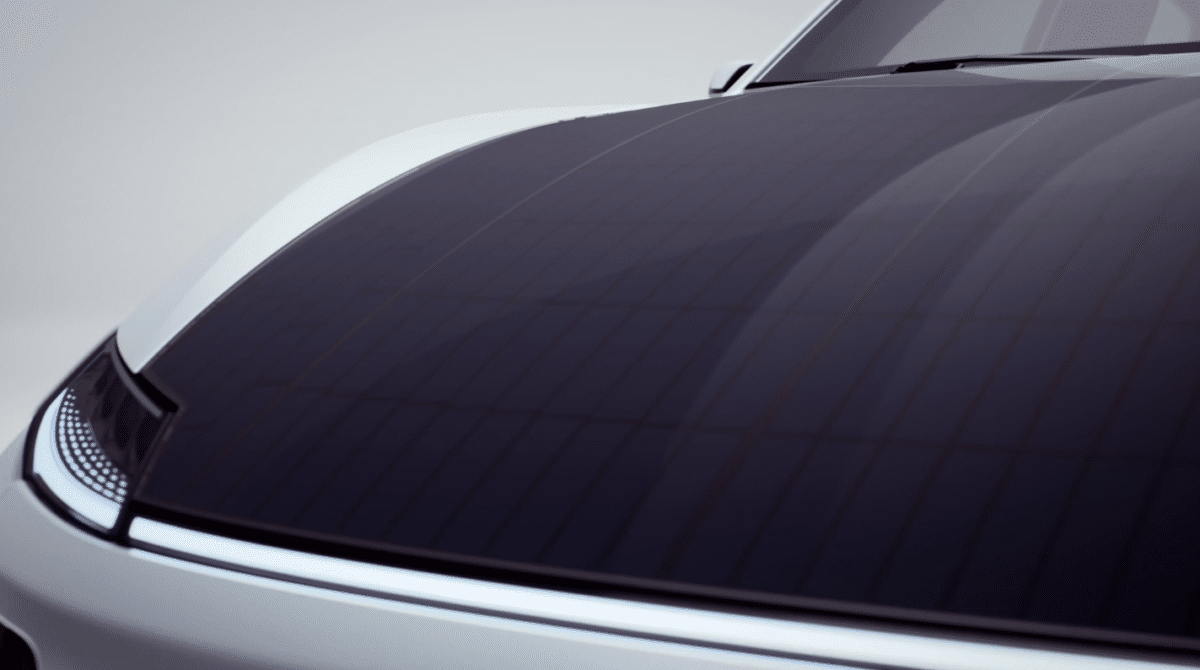- The surface area of a car is modest and PV adds just a few miles of range per day.
- A solar system adds weight, electronics, and complexity.
- PV only produces power if the car is in the sun — and then the hot car needs to be cooled. With AC.
- A solar panel, contoured and ruggedized for a car roof, is an expensive and difficult-to-repair way to make power.
Even 2017 Elon Musk agreed when he said, “The least efficient place to put solar is on the car.”
Solar powered Cybertruck
But 2019 Elon Musk disagreed and added an (as-yet-unpriced) option to the 2021 Tesla Cybertruck that “generates 15 miles per day, possibly more” from solar power. Musk’s tweet said, “Adding fold out solar wings would generate 30 to 40 miles per day. Avg miles per day in US is 30.”
At best, one might conclude that the panels add a few miles per day, power a fan and help when camping.
That was before the virus. Now, every socially-distanced mile of vehicle range is crucial when making weekly grocery, chocolate, liquor and medical supply runs.
Solar on a truck is a “game changer” and “killer app?”
Electrek, not always an unbiased arbiter, believes that the Cybertruck solar option is “a game-changer” and Tesla’s new “killer app.” Electrek suggested that Tesla would “leverage its experience with the solar roof to introduce it to other cars.”
Other vehicle builders are toying with the integrated solar car roof.
Last year Hyundai launched a Sonata Hybrid with a solar roof charging system that could provide an extra two miles of range per day.
According to Dutch startup Light Year, the roof and hood of its prototype is made of 50 square-feet of solar cells within safety glass. The company is claiming a range of 450 miles and the ability of its PV array to add 7.5 miles of range per hour when in the sun.
Sion, built by German startup Sono Motors, is a solar-integrated EV with a 155-mile range.
Squad Mobility builds a small solar-powered urban vehicle.
The solar-integrated vehicle roof might make more sense on a motorhome or semitruck. Or Mars.
Barring zombie apocalypse and societal collapse, a home solar array is still the most economical method of charging your car.








IMHO, this seems like fluff. Solar on large truck or bus roofs might make sense. But a much bigger “Game Changer” would be equipping all EV’s to provide distributed emergency backup power in the event of extended power outages that have occurred during utility company (PG&E) wildfire induced power shut offs. Typical residential solar + battery systems simply aren’t designed for this; they’re designed to flatten the daily duck curve & thereby optimize your system ROI and reduce peak loads on the utility providers. As an added benefit, you get some limited backup capacity, but nowhere near enough for a multi-day power outage. Conversely, EV’s all provide a huge storage capacity that could be advantageously tapped during multi-day outages. This has been demonstrated by Nissan in Japan. Other EV manufacturers like Tesla need to adopt this; its a really big value added capability.
“”But 2019 Elon Musk disagreed and added an (as-yet-unpriced) option to the 2021 Tesla Cybertruck that “generates 15 miles per day, possibly more” from solar power. Musk’s tweet said, “Adding fold out solar wings would generate 30 to 40 miles per day. Avg miles per day in US is 30.””
There’s this company Rapid Roll Solar PV that makes “roll out solar PV” that can be carried in a small trailer and rolled out to make an 11KWp array per roll. One could shrink that down and use the “under bed” storage of the Cybertruck for an extended roll out solar PV charging array. You might be able to get 4 to 6KWp in that space. As folks do use their trucks to get out into the wilderness, roll out solar PV could make the camping trip less inconvenient and a little safer if one finds out they “ran out of gas”.
Even at a solar PV harvest efficiency of 35% not on the market tandem solar PV cells, you’re only looking at maybe 1.5 to 1.8KWp generation capability with top surface mounted cells. Solar cells bonded to the body on the sides would have little effect on overall energy generation during the day. So, better method, get a roll out solar PV array and find a sunny place, roll it out to charge the vehicle’s main battery pack.
“According to Dutch startup Light Year, the roof and hood of its prototype is made of 50 square-feet of solar cells within safety glass. The company is claiming a range of 450 miles and the ability of its PV array to add 7.5 miles of range per hour when in the sun.”
Interesting, if one could afford to “slow down”, one might get a couple of more miles than that 7.5 miles. The rub, is what happens if a panel or its internal connections go bad? Does one have a $2000 glass replacement to look forward to? I’m soooooo sure Safelight would be all over this, yeah right.
Thank you so much for sharing this amazing article.
The very informative post you share.